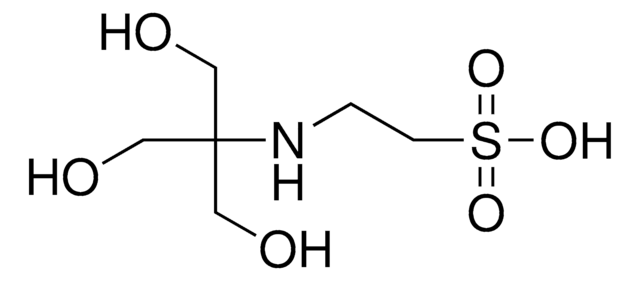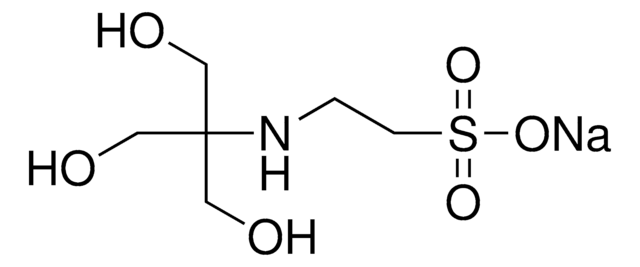T8665
3,3′,5,5′-Tetramethylbenzidine
peroxidase substrate, chromogenic, liquid
Synonym(s):
TMB
About This Item
Recommended Products
product name
3,3′,5,5′-Tetramethylbenzidine (TMB) Liquid Substrate System, peroxidase substrate
Quality Level
form
liquid
storage condition
protect from light
shipped in
wet ice
storage temp.
2-8°C
Related Categories
Application
3,3′,5,5′-Tetramethylbenzidine has been used in a study to demonstrate that by measuring substrate absorption values off the absorption maximum, the measuring range of any immunoenzymometric assay can be extended significantly without jeopardizing assay characteristics. 3,3′,5,5′-Tetramethylbenzidine has also been used in a study to understand the formation of CuS concave superstructures with peroxidase-like activity.
Caution
Physical form
Signal Word
Danger
Hazard Statements
Precautionary Statements
Hazard Classifications
Acute Tox. 3 Dermal - Acute Tox. 3 Inhalation - Acute Tox. 3 Oral - Eye Irrit. 2 - Flam. Liq. 3 - STOT SE 1
Target Organs
Eyes,Central nervous system
WGK
WGK 2
Certificates of Analysis (COA)
Search for Certificates of Analysis (COA) by entering the products Lot/Batch Number. Lot and Batch Numbers can be found on a product’s label following the words ‘Lot’ or ‘Batch’.
Already Own This Product?
Find documentation for the products that you have recently purchased in the Document Library.
Customers Also Viewed
Articles
Nitroblue Tetrazolium (NBT) is used with the alkaline phosphatase substrate 5-Bromo- 4-Chloro-3-Indolyl Phosphate (BCIP) in western blotting and immunohistological staining procedures. These substrate systems produce an insoluble NBT diformazan end product that is blue to purple in color and can be observed visually.
Our team of scientists has experience in all areas of research including Life Science, Material Science, Chemical Synthesis, Chromatography, Analytical and many others.
Contact Technical Service












